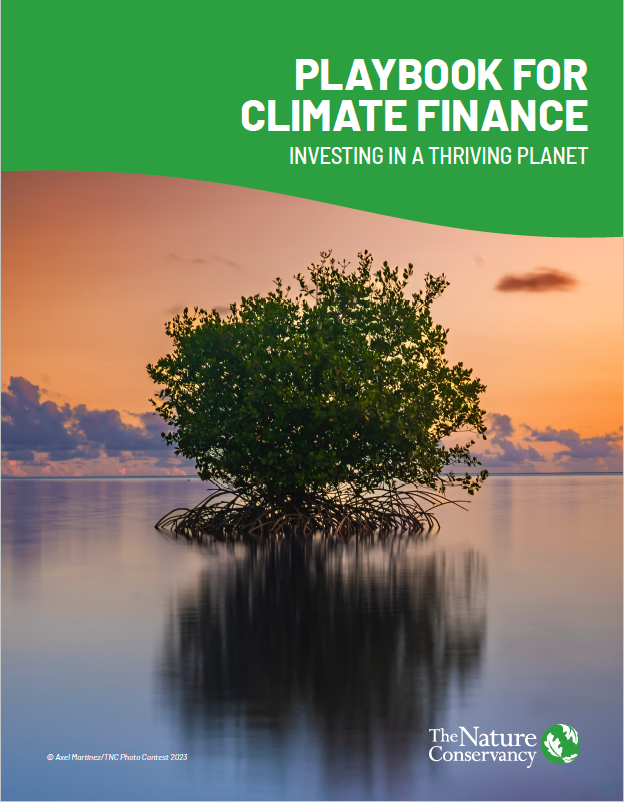
The Playbook is a call to action: a roadmap for unlocking the flow of finance to the solutions our planet urgently needs. It gathers a decade of breakthroughs into one guide and includes ten bold approaches that prove we can tackle climate change, protect nature and strengthen communities at scale.
A major focus of COP30 negotiations is finalizing the Baku-to-Belém Roadmap to operationalize the new US $1.3 trillion climate finance goal, including who pays, how it’s tracked and how private capital is mobilized. These tools in this playbook are designed for leaders who are ready to finance solutions that deliver for people, nature and climate.
Download
Our global insights, straight to your inbox
Get our latest research, insights and solutions to today’s sustainability challenges.
Sign UpInside the Playbook
Ready-to-use models: Community-driven solutions, ecosystem insurance, blue carbon ventures, carbon markets, traceability tools and more.
Finance strategies that scale: From guarantees and concessional capital to performance incentives that draw in private investment.
Policy pathways: Clear options for governments to mainstream Natural Climate Solutions from community plans to national budgets.
Why it matters
Clarity that builds confidence: Each case lays out the mechanics, partners, risks, and results so investors and policymakers can act quickly.
Equity at the core: Indigenous Peoples and traditional communities are partners and leaders, not just beneficiaries.
Who it’s for
This is a playbook for investors, philanthropists, governments, development banks and community leaders ready to finance solutions that deliver for people, nature and climate.





